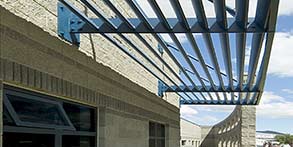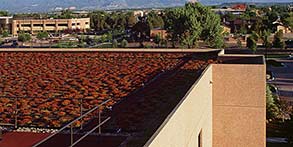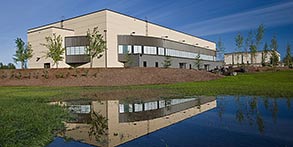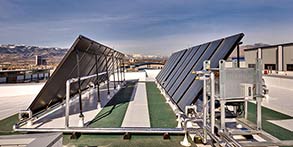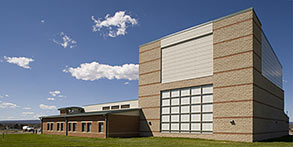- Mitigate heat island effect by selecting appropriate roofing, wall, pavement and other hardscape materials as part of an integrated approach that could include stormwater management (permeable surfaces) when appropriate.
- Reduce light pollution as detailed by UFC 3-530-01.
- Address stormwater management requirements using the strategies included in UFC 3-210-10.
- Integrate passive heating and cooling systems prior to the design of active mechanical systems.
- Provide ventilation and thermal comfort for facility occupants; the use of passive (non-mechanical) thermal comfort methods are allowed and encouraged.
- Establish and implement a moisture-control strategy to prevent building damage, minimize mold contamination and reduce health risks.
- Design facilities for maximum efficiency given their climate zone.
- Promote practices that reduce, reuse and recycle material and energy resources; promote the use of reclaimed materials and materials with recycled content in construction projects.
- When practical and cost effective following Life Cycle Cost Analyses (LCCA) incorporate the following:
Design and construct High Performance and Sustainable Buildings (HPSB) that comply with all the federal HPSB requirements as detailed in UFC 1-200-02 for all Facility Groups following the Facilities Hierarchy guidance in the Overview of this AFCFS. Reduce the total cost of facility ownership through sustainable design features such as a building’s orientation, thermal envelope and shading devices. Address climate resiliency and local and regional contexts in building designs and features. Evaluate building components to determine whether passive and natural design strategies and features are cost effectively incorporated before the active and mechanical systems are designed. Maintain occupant health, safety and wellness while satisfying mission and user requirements. Use products and materials that have a lesser or reduced effect on human health and the environment.
Follow federal requirements to reduce demand and optimize performance of the building energy and water systems as a key strategy to minimizing the total ownership cost of AF facilities. Design buildings to achieve at least 30% energy consumption reduction from the ASHRAE 90.1 baseline. Base design decisions on life cycle cost (LCC) effectiveness using calculation methodologies detailed in NIST Handbook 135. Cost-effectively attain energy efficiency and water conservation.
UFC 1-200-01 General Building Requirements https://www.wbdg.org/dod/ufc/ufc-1-200-01
UFC 1-200-02 High Performance and Sustainable Building Requirements https://www.wbdg.org/dod/ufc/ufc-1-200-02
UFC 3-101-01 Architecture https://www.wbdg.org/dod/ufc/ufc-3-101-01
UFC 3-120-10 Interior Design https://www.wbdg.org/dod/ufc/ufc-3-120-10
UFC 3-210-10 Low Impact Development https://www.wbdg.org/dod/ufc/ufc-3-210-10
UFC 3-410-01 Heating, Ventilating, and Air Conditioning Systems https://www.wbdg.org/dod/ufc/ufc-3-410-01
UFC 3-530-01 Design: Interior and Exterior Lighting and Controls https://www.wbdg.org/dod/ufc/ufc-3-530-01
Air Force Sustainable Design and Development (SDD) Implementing Guidance Memorandum https://www.wbdg.org/FFC/AF/POLICY/af_sdd_impl_guidance.pdf
10 CFR 433 https://www.wbdg.org/ffc/fed/code-federal-regulations/10-cfr-part-433
10 CFR 436 https://www.wbdg.org/ffc/fed/code-federal-regulations/10-cfr-part-436
NIST Handbook 135 http://www.wbdg.org/FFC/NIST/hdbk_135.pdf
US Air Force Family Housing Design Guide for Planning, Programming, Design and Construction https://www.wbdg.org/FFC/AF/AFDG/familyhousing.pdf
